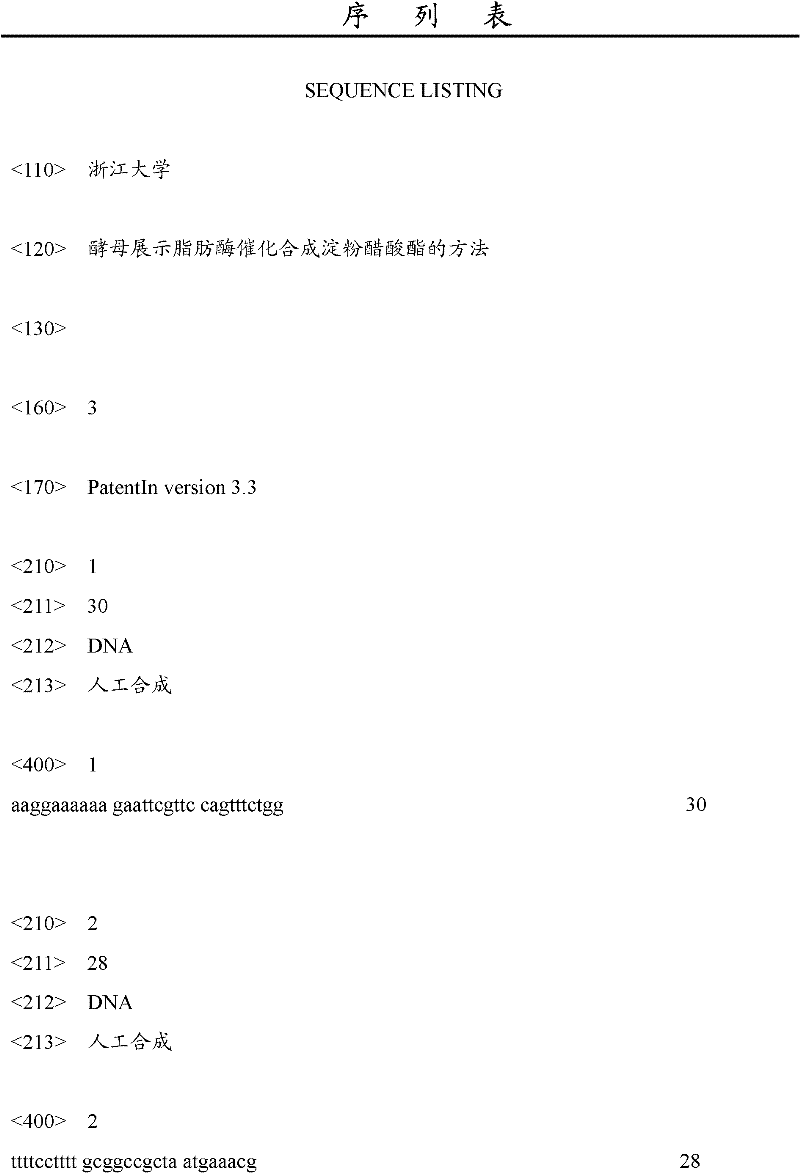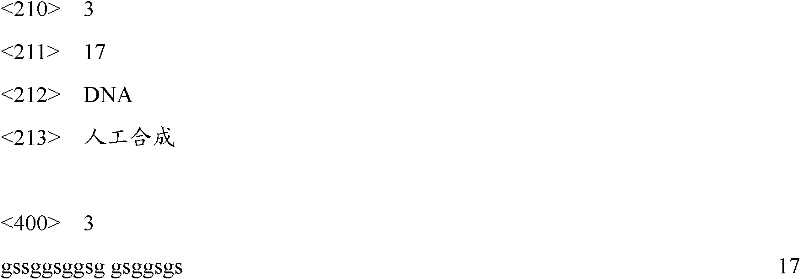Method for catalyzing and synthesizing starch acetate through yeast show lipase
A technology of starch acetate and lipase, which is applied in the field of bioengineering, can solve the problems of complicated and time-consuming immobilization process, high production cost, and limited commercial application, and achieve the advantages of improved operation stability, low production cost, and shortened reaction time Effect
- Summary
- Abstract
- Description
- Claims
- Application Information
AI Technical Summary
Problems solved by technology
Method used
Image
Examples
Example Embodiment
[0017] Example 1 Preparation of yeast display lipase
[0018] Synthesize the lipase gene of Rhizopus oryzae (Genbank No.: AF229435) and the cell wall alpha lectin gene of Pichia pastoris GS115 (Genbank No. M28164) by artificial synthesis, and add the C-terminal of the lipase gene The peptide sequence GSSGGSGGSGGSGGSGS (linker) is connected to the upper part, and the nucleotide sequence pro-ROL-linker-α-agglutinin is obtained after the connection. At the same time, EcoR I and Not I restriction sites are added at both ends of the sequence, where pro-ROL is the lipase gene , Α-agglutinin is the cell wall α lectin gene.
[0019] Using the above artificially synthesized sequence as a template, PCR amplification was performed using the following primer pairs,
[0020] Upstream primer: 5’-AAGGAAAAAAGAATTCGTTCCAGTTTCTGG-3’;
[0021] Downstream primer: 5’-TTTTCCTTTTGCGGCCGCTAATGAAACG-3’
[0022] The PCR reaction system is: 1μl template DNA, 0.5μl high-fidelity DNA polymerase, 0.4μl dNTP (50mM)...
Example Embodiment
[0026] Example 2 Yeast display lipase to catalyze the synthesis of starch acetate
Example Embodiment
[0027] Example 1 Prepare 35% starch milk (starch dry basis) from 350g of cereal starch with water, and treat it at 65°C for 15 minutes to absorb water and expand the starch milk. After cooling, add 1g of the yeast display lipase prepared above, and then add 10g of acetic acid in batches. The anhydride is placed in a 85-1 magnetic stirrer and stirred to start the reaction. The speed is 100 revolutions per minute. The reaction temperature is kept at 66°C. After 2 hours of reaction, the stirring is stopped, the pH is adjusted to 6.0, the precipitate is centrifuged to take the precipitate, and washed with water several times Precipitate, wash away unreacted acetic anhydride, then dry and pulverize the precipitate to obtain the finished product.
PUM
 Login to view more
Login to view more Abstract
Description
Claims
Application Information
 Login to view more
Login to view more - R&D Engineer
- R&D Manager
- IP Professional
- Industry Leading Data Capabilities
- Powerful AI technology
- Patent DNA Extraction
Browse by: Latest US Patents, China's latest patents, Technical Efficacy Thesaurus, Application Domain, Technology Topic.
© 2024 PatSnap. All rights reserved.Legal|Privacy policy|Modern Slavery Act Transparency Statement|Sitemap


